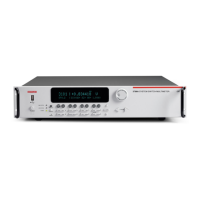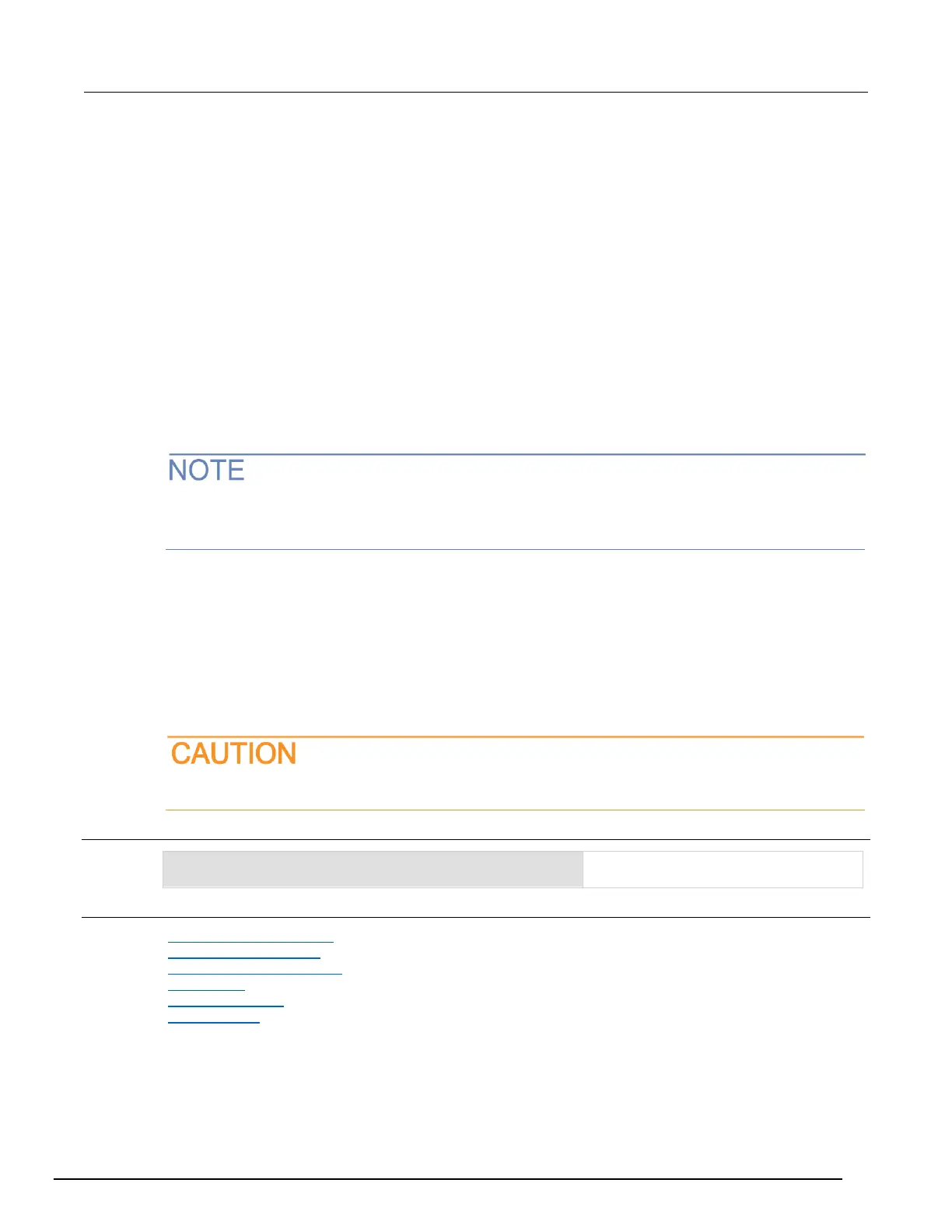When the connection rule is set to break before make, the instrument ensures that all switch channels
open before any switch channels close. When switch channels are both opened and closed, this
command executes not less than the addition of both the open and close settle times of the indicated
switch channels.
When the connection rule is set to make before break, the instrument ensures that all switch channels
close before any switch channels open. This behavior should be applied with caution because it will
connect two test devices together for the duration of the switch close settle time. When switch
channels are both opened and closed, the command executes not less than the addition of both the
open and close settle times of the indicated switch channels.
With no connection rule (set to channel.OFF), the instrument attempts to simultaneously open and
close switch channels in order to minimize the command execution time. This results in faster
performance at the expense of guaranteed switch position. During the operation, multiple switch
channels may simultaneously be in the close position. Make sure your device under test can
withstand this possible condition. When switch channels are both opened and closed, the command
executes not less than the greater of either the open or close settle times of the indicated switch
channels.
You cannot guarantee the sequence of open and closure operations when the channel connect rule
set to OFF. It is highly recommended that you implement cold switching when the channel connect
rule is set to OFF.
In general, the settling time of single commands that open and close switch channels depends on
several factors, such as card type and channel numbers. However, the opening and closing of two
sequential channels including no others can be guaranteed as follows:
▪ Break before make: Open settle time + close settle time
▪ Make before break: Close settle time + open settle time
▪ channel.OFF maximum of open settle time or close settle time
This behavior is also affected by channel.connectsequential and any additional user delay
times.
Make-before-break (also known as hot switching) can dry-weld reed relays so that they will
always be on. Hot switching is recommended only when external protection is provided.
Example
Also see
channel.connectsequential (on page 11-50)
channel.exclusiveclose() (on page 11-52)
channel.exclusiveslotclose() (on page 11-54)
dmm.close() (on page 11-160)
scan.background() (on page 11-313)
scan.execute() (on page 11-317)

